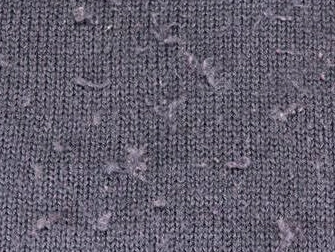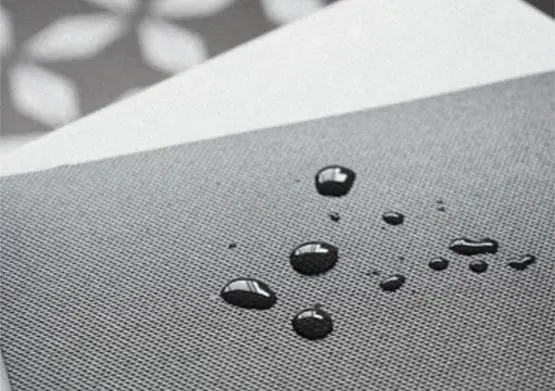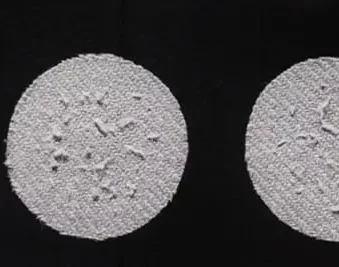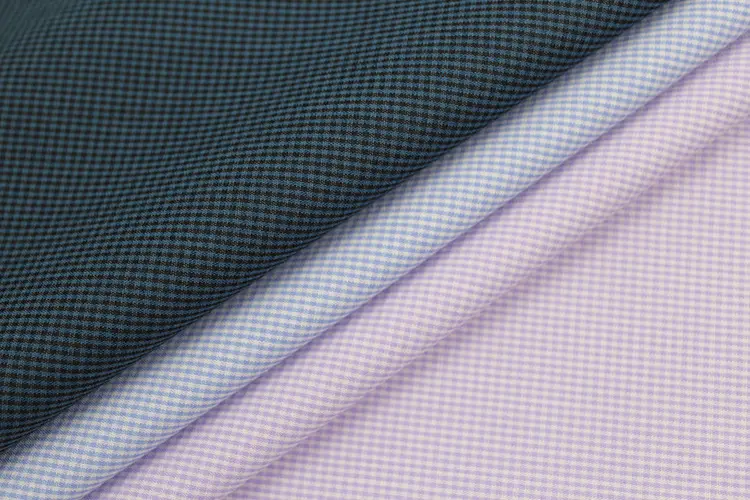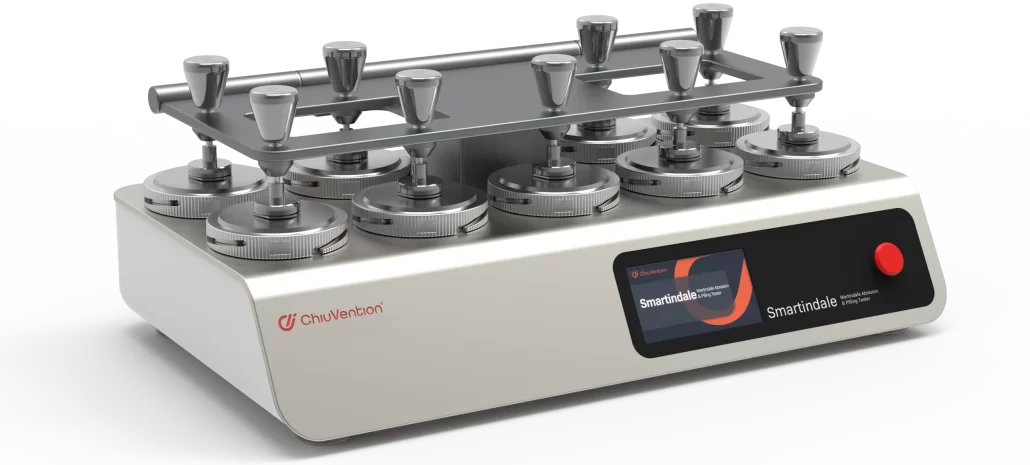Abrasion resistance is a key quality indicator for textiles. It affects the product’s durability and use. It refers to the fabric’s resistance to wear from repeated friction with other things.
Definition of Pilling
Clothes will rub against each other when worn and washed. If the friction is greater than the fibre strength, it will expose the fibre ends. This will cause surface hairs, or pilling. If these hairs on the clothes continue to wear or wash, they will tangle into balls. This will cause pilling. The garment’s surface will lose its luster and look poor. It will no longer be beautiful, which will affect the wearer.
Definition of Textile Abrasion Resistance
Textile abrasion is the repeated friction between fabrics or with other substances. It causes gradual wear and tear of fabrics. Textile abrasion resistance tests a fabric’s ability to resist wear from friction.
Used textiles face various external factors. They often rub against surrounding objects, causing wear and damage. This affects the fabric’s performance.
Testing a fabric’s abrasion resistance can improve textile use. It is a key quality indicator for textile products.
A textile abrasion resistance test subjects the fabric to repeated friction. This causes wear. Mainly, it leads to: breaks, reduced quality, color loss, and pilling.
Textile abrasion performance
1.Continuous collision between fibres during friction. Fibre fragments in the yarn break due to fatigue damage, resulting in breakage of the yarn.
2.Pulling out fibers from the fabric loosens the yarn and fabric structure. Repeated action may pull out the fibres completely. This can thin the yarn and fabric, or even disintegrate them.
3.Cutting and breaking fibers cause the yarn to break.
4. Abrasion on the fiber surface causes the fiber surface layer to appear lost in fragments.
5.Friction produces high heat. It melts or deforms the fibre, affecting its structure and properties. Wear and tear showed in the fabric. The item broke, became discoloured, and pilled. The quality had declined.
The process of pilling
●Yarn is the basic unit of fabric. Carding, stretching, and friction process it. This makes its surface rough and causes fuzz to appear.
●Fabrics, when used, face external forces. These cause the fabric’s surface to fluff or pull out monofilaments. When the fluff reaches a certain height and density, friction causes it to tangle into a ball. If the material is very rigid, the ball won’t easily come off. This leads to the formation of a hairball.
● Fabric pilling will ruin the fabric’s look and reduce its wearability. It is a key test in trade transactions.
Why does it pill?
With continued friction, the fibres in the fabric formed a ball. Repeated folding, wear, and breakage caused the ball to fall off. But, the broken ends of the fibres began to stick out. This caused more friction and formed another fibre ball. Wool and chemical fibres are easy to ball, especially coarse carded wool and cashmere. Twill and satin fabrics have a small yarn twist. They use hair feathers, a loose structure, and long floating threads. These factors make them prone to pilling. Also, the processing form shows that a compact, flat fabric is less prone to pilling. It has a general fibre twist, fibre, and fibre holding force. On the contrary, blended fabrics are more prone to pilling. Nylon, polyester, and polypropylene are the worst. This is due to a mismatch in the fibre types and their twists. The fabric’s surface tends to fluff.
Wear of textile products is mainly manifested in the following five aspects:
(1) Friction causes constant collisions between fibres. This, and fatigue, breaks the yarn.
(2)Repeated pulling may loosen the yarn and fabric by pulling out fibers. It may even cause the yarn and fabric to disintegrate.
(3)Cutting and breaking fibers causes the yarn to break.
(4) When fibres undergo abrasion, they appear to shed the surface layer in fragments.
(5) Friction generates high temperatures. It can melt or deform the fibre. This affects the fibre’s structure and mechanical propertie
Changes in the fabric show wear. It includes, broken threads, loss of quality, discoloration, and pilling.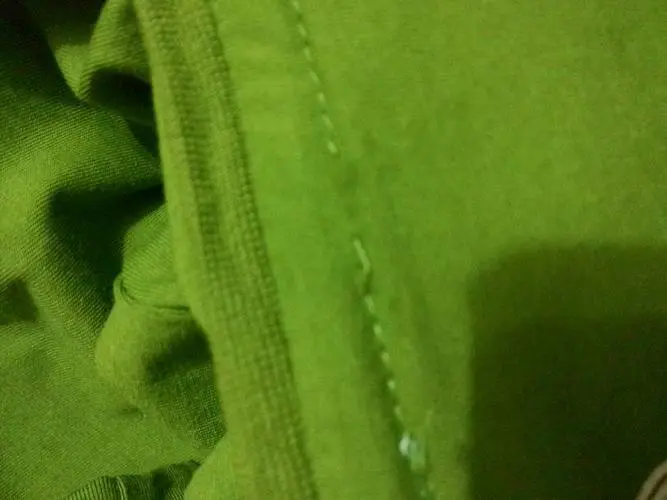
Various methods test the abrasion resistance of textiles. These include the flat, curved, folded edge, and composite grinding methods. The Martindale method is a flat grinding method. The Martindale method is a flat abrasion test. It is widely used to test the abrasion resistance of textiles and furniture. This includes garments and home fabrics.
Abrasion resistance testing for different textile types
Tests for abrasion resistance in textiles vary by their use and properties. Here is a comparison of abrasion tests for various textiles and floor coverings. It includes coated, decorative, and functional textiles.
Floor coverings
Test methods for abrasion resistance: the Martindale test or the Taber Abrasion test. These tests simulate friction on the floor.
Assessment indicators: The focus is on the surface’s look and its abrasion resistance. The key indicators are the number of cycles in the Martindale test and the amount of abrasion in the Taber test.
Other considerations: Carpets must resist abrasion and stains, and be easy to clean.
Coated textiles
Abrasion test methods: Use the Martindale or Taber Abrasion tests. But, consider the coating’s effect on the tests.
Evaluation indicators: Test the coating’s abrasion resistance and the fabric’s. Also, check the coating’s adhesion after abrasion and any changes in appearance. The number of cycles and the amount of abrasion are the main indicators.
Other considerations: Coated textiles’ abrasion resistance may depend on the coating. It varies by its type and thickness. So, it needs testing for different coatings.
Decorative textiles
Abrasion resistance test method: Surface abrasion tests usually use the Martindale test.
Assessment indicators: The main focus is on the fabric’s wear and abrasion resistance. The number of cycles and the amount of abrasion are key indicators.
Other considerations: Decorative textiles are renowned for their aesthetic appeal.
Rewritten active sentence: Other considerations: People know decorative textiles for their appearance.
We must consider how wear affects it in the test. This includes colour change and pattern wear.
Functional textiles
Abrasion resistance test methods: In addition to the Martindale test, consider the use of functional textiles. For example, you can test waterproof fabrics using the water cycle test.
We must set evaluation indicators for functional textiles. They should test for waterproofness, breathability, and antibacterial traits. So, we must consider the above functional indicators, too. They are as important as abrasion resistance.
Other considerations: Functional textiles often need multiple traits at once. So, the abrasion resistance test must consider its impact on other functions. In the test, choose a method based on the textile’s use and features. Also, consider its relationship with other performance indexes.
Introduction of standard system
International Standard
ISO12947.2-1998 “Determination of abrasion resistance of textiles by Martindale method. Part 2: Determination of specimen breakage.”
ISO 12947.3-1998, “Determination of abrasion resistance of textiles by the Martindale method. Part 3: Determination of quality loss.”
ISO 12947-4-1998 is a test for textiles’ abrasion resistance. It uses the Martindale method. Part 4: Evaluation of changes in appearance”.
American Society for Testing and Materials (ASTM) Standards
ASTMD4966-2010 “Textile abrasion resistance test Martindale abrasion tester“.
European Union Standards
ENISO12947-2:1998 “Determination of abrasion resistance of textiles by the Martindale method. Part 2: Determination of specimen breakage.”
EN ISO 12947-3:1998 “Martindale method for textiles. Part 3: Mass loss test.”
EN ISO 12947-4:1998 is the Martindale method for testing textile abrasion resistance. Part 4: Evaluation of changes in appearance.”
German Institute for Standardisation (DIN) Standards
DINEN ISO 12947-2-2007 “Textiles. Determination of the abrasion resistance of fibres by the martensitic method . Part 2: Test damage determination;
DINENISO12947-3-2007 “Textiles. Determination of the abrasion resistance of fibres by the martensitic method. Part 3: Determination of mass loss;
DINENISO12947-7-2007 “Textiles. Determination of the abrasion resistance of textiles by the Martindale method. Part 4: Assessment of change in appearance”.
British Standards Institution (BS) Standards
BS ISO 12947-2:1998 “Martindale method for textile abrasion resistance.” Part 2: Determination of specimen breakage.”
BS ISO 12947-3:1998 “Test for textile abrasion resistance by the Martindale method. Part 3: Mass loss.”
BS EN ISO 12947-4:1999, “Martindale method for textile abrasion resistance.” Part 4: Evaluation of appearance changes.”
Chinese national standards
GB/T21196.2-2007 “Determination of abrasion resistance of textile fabrics by Martindale method. Part 2: Determination of specimen breakage.”
GB/T21196.3-2007 “Determination of abrasion resistance of textiles by Martindale method. Part 3: Quality loss.”
GB/T21196.4-2007 “Textiles – Martindale method for abrasion resistance – Part 4: Appearance changes in the evaluation.””
Note: The above standards are from several key global groups. They test fabrics’ abrasion resistance using the Martindale method. Among them, the EU standard is equivalent to the ISO standard. China’s national standard testing method is nearly the same as the ISO standard. It only expands the scope to include coated fabrics. For testing these fabrics, it adds rules for breakage, friction load, and abrasives, and their replacements.
The U.S. standard includes provisions for an abrasion resistance test. It uses a Martindale wear tester and auxiliary materials. These test methods are basically the same as ISO 12947.2 to 4. They assess quality loss and appearance changes. The ISO 12947.3 and 4 standards differ slightly in their test conditions and results. They also simplify the expression of the test results.
Improving the habit of using the accuracy of measurement results
The test must be accurate and repeatable. It must then, precisely and fully, express the abrasion resistance of textiles. This article discusses three factors that affect Martindale test results. They are the instrument’s maintenance, the specimen’s prep, and the operators’ practices. It aims to improve the habit of using accurate measurements.
Maintenance of Martindale Instruments
The instrument’s state affects the test results’ reliability. To ensure accuracy, the test instrument must be in * state. Also, you need to periodically check the performance of the instrument. This is in addition to routine cleaning and maintenance.
Control of pressure applied to the specimen holding head
The Martindale abrasion resistance test requires a specific pressure on the specimen. This pressure will directly affect the friction. If the pressure is low, the friction will be too light. The test results will be better than the actual performance of the specimen. If the pressure is too high, it will damage the specimen and bias the results.
Accuracy of the friction counter
For Martindale abrasion testing, we need the friction counts. We will use them to rate the wear from different counts. If the friction counter fails, it will affect the test’s counts, causing errors.
Preparation of specimens
The selection of specimens for the test determines the representativeness of the sample.
Selection of specimens
To get a representative sample, select parts with different warp and weft yarns. Pay special attention to some properties of the sample. For example, the test fabric for printed fabrics should show the entire pattern. This avoids missing, friction-sensitive parts. Woven fabrics must stay a certain distance from the door’s edge. Also, the number of specimens affects the test’s accuracy and repeatability. The more Martindale tests of specimens, the stronger their representativeness. The accuracy will be higher. Conversely, if the number is too small, the test results will be more random. This lowers reliability. The fewer specimens, the fewer choices for 3.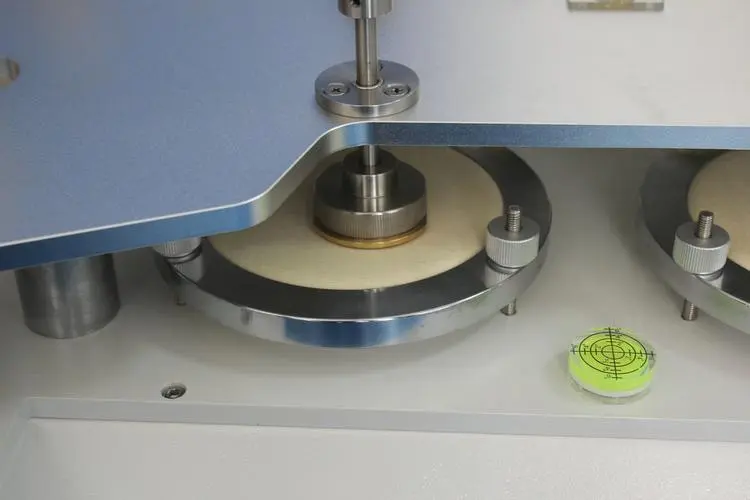
Pre-treatment of specimen
Before sending the test, pack and coil the fabric. To better test it, it needs to be in a standard, spread state for a time. This is to allow the fabric to recover from the taut state. Without the pretreatment, the fabric is taut. This lowers its abrasion resistance and will affect the test’s accuracy.
Normality of experimental operation
To ensure correct operation, the experimental operators need training. During the operation, watch the sample placement and clamping tightness. It should be tight, but not too tight to stretch the sample. It mustn’t be too loose, or the surface will bulge and affect the results.
How to use Martindale Tribometer correctly
Sample preparation
Correctly preparing the samples prior to testing is critical. Fabric samples must resist abrasion. They should not stretch. Remove any wrinkles or folds. Use backing material to support the sample and protect the base of the holder from damage. It is also important to remove any loose fibres or threads that may affect the test results.
Test Parameters
The Martindale Abrasion Tester has several adjustable test parameters. They can suit the test’s requirements. The most common parameters are load, number of cycles and test speed. The standard load for the test is 9 KPa and the number of cycles is usually set to 1000. You can adjust the speed of the test based on the type of fabric and the purpose of the test. Higher speeds are usually used for thicker and more durable fabrics.
Conducting the test
Once the test parameters have been set, it is time to perform the test. Place the sample on the test board and fix it in place. Ensure the sample is positioned correctly. The warp and weft yarns must align with the machine head’s movement.
Next, start the Martindale Pilling Machine and let it run for the specified number of test cycles. During the test, monitor the sample for any signs of damage or wear and record the results.
Data Analysis
Abrasion test: Measure the weight loss of the specimen before and after the test. The difference is the amount of abrasion. To calculate the wear rate, divide the amount of wear by the duration of the test and the load applied.
Pilling test: We assess a sample’s tendency to pill by counting the pills that form on its surface after the test. Pilling counts are typically performed on a scale of 1 to 5, with 5 being the most severe.
Statistical Analysis: We must use statistics to analyze test results. This will ensure their accuracy. This can include finding the mean, standard deviation, and CV for several tests. It can also include using regression analysis. It will examine the link between test parameters and results.
Rating
Option 1: The end point of the test is when two or more yarns are broken for woven fabrics or when a hole is created for knitted fabrics.
Option 2: The end point of the test is when there is a sufficient change in colour or appearance to cause a complaint from the consumer.
Note: 1) Colour change can be caused by different reasons, e.g. shedding or feathering on the surface of the specimen or feathering in loops to form a fancy yarn pattern. 2) Colour change can be caused by different types of fibres, e.g. hair loss or feathering on the surface of the specimen. By different types of fibers by dyeing and blending, the yarn or fibers of different degrees of wear and tear, will cause changes in colour or appearance, for this case, the end of the test is generally used in the discoloration of grey card assessment.
②The end point of the test is generally the end of the test when the discolouration reaches the grey card level 3 or below.
Option 3: The change in weight of the specimen before and after abrasion is evaluated, and the reduction in weight can be expressed as a percentage based on the weight before the test.
Troubleshooting
Sometimes, a Martindale pilling instrument may give inaccurate results. This may be due to sample prep, test settings, or instrument calibration. If you encounter inaccurate results, you can take the following troubleshooting steps:
1. Check the sample preparation and make sure it was done correctly.
2. Verify that the test parameters are set as required for the test.
3. Check the instrument calibration and make any necessary adjustments as required.
4. Repeat the test with a new sample to ensure accuracy.
Proper use of the Martindale Abrasion Pilling Tester is critical. It ensures accurate and reliable test results. Following these guidelines will let users test correctly, troubleshoot, and get accurate results. Accurate test results can help textile manufacturers. They can improve product quality and provide better value to customers.
Influencing factors and improvement methods
1.Fabric organisation:0
The fabric’s structure affects its compactness, thickness, and durability. It affects abrasion resistance as follows: plain weave > twill weave > satin weave.
2.Geometric structure of textile :
The fabric’s thickness, warp and weft density, weight per area, density, and hair content. In general, thicker fabrics resist abrasion better. So, higher warp and weft density, weight, and hair content improve resistance. But, lower values hurt it.
3.Fibre type:
Generally speaking, the size of fibre abrasion resistance is as follows: polyamide > polypropylene > polyvinyl chloride > polyethylene glycol > polyester > acrylic > chlorine > wool > silk > cotton > linen > rich fibre > copper-ammonia fibre > viscose fibre > acetate fibre > glass fibre.
4. Fibre structure:
Fibre structure shows that round, cross-section fibres resist abrasion better than shaped ones. Finer fibres have worse abrasion resistance. To improve abrasion resistance, we need to choose a round, abrasion-resistant fibre.
5. Finishing:
Fabric finishing can affect fabrics’ abrasion resistance. It uses physical and chemical methods to achieve a desired performance. Such as protective finishing: waterproof, fireproof, mildew, oil, cold, anti-pilling, anti-pilling.
How to prevent pilling in production
In production, improving textiles’ anti-pilling is a complex task. We must take strong measures. They should fix the problem in the fibre production, spinning, and finishing processes. We need to communicate more with suppliers and customers. It should balance pilling and performance. That’s like the trade-off between feel, appearance, and pilling.
01 fibre selection For easy pilling varieties when choosing raw materials:
1.The main consideration is the short staple content of the raw material. To choose long fibre length, moderate fineness, less short staple raw materials.
2.For blended products with chemical fibres. Choose a thicker diameter chemical fibre than the diameter of the fine more anti-ball effect. But the feel is hard, to balance the feel and the relationship between balling.
02Adopt combed yarn
Fibre arrangement in the yarn is relatively straight. Short fibre content is less, the fibres used are generally longer, and the hairiness of the yarn is less. Therefore, combed fabrics are generally less prone to pilling.
03Optimise the spinning process
In spinning, we should control the short staple and reduce hairiness. We must set the process parameters scientifically and reasonably. This will reduce the short fibre content in each product, yarn hairiness, and the length of the hairs. It will also improve yarn dryness uniformity and reduce thick knots.
● When spinning, use the steel collar with high hardness and match the suitable steel wire ring.
Appropriate increase of yarn twist, e.g. 8 to 15 per cent. However, the yarn will feel hard after the increase of twist.
● Use an automatic winder for winding. Its precision system prevents yarn from rewinding. It also reduces hairiness from friction during rewinding.
04 Improvement of yarn structure
●Cotton and regenerated cellulose fibres (e.g., viscose, modal, tencel, bamboo) can be spun using Cyclo-, Compact-, or Cyclo-compact-spinning. This will reduce hairiness and improve inter-fibre embrace. It will also boost abrasion resistance and anti-pilling.
Solospun can spin pure wool or wool-blended yarns. It’s a cable spinning method. It twists multiple weakly twisted whiskers into a stronger yarn. This makes it more abrasion-resistant and less hairy.
How consumers can avoid pilling on a day-to-day basis
Minimize friction, especially with hard items like backpacks. Also, prevent hooking and pulling with sharp objects. Add some fabric softener when washing. For cashmere and wool sweaters, use a special laundry detergent with anti-pilling additives.
Evaluation method of fabric abrasion resistance
These conditions determine specimen breakage.
In woven fabrics, at least two independent yarns must be completely broken.
To create visible holes in knitted fabrics, one must break a yarn.
In pile or cut-pile fabrics, you must wear the surface pile to the bottom, or the tufts must fall off.
In non-woven fabrics, rubbing must cause holes with a diameter of ≥0.5mm.
The coating on coated fabrics must get damaged. It must expose the base fabric or cause flakes to fall off.
Fabrics’ abrasion resistance is generally tested in three ways. First, we check for specimen breakage. Next, we measure quality loss. Finally, we evaluate changes in appearance.
Lissajous curve plane movement trajectory
Determination of specimen breakage:
Abrasive friction, under a certain load, caused the specimen to break. The fixture had a Lissajous curve motion. We used the number of friction cycles to test the fabric’s abrasion resistance.
Determination of quality loss:
The abrasive rubs the specimen in the fixture under a certain load. The trajectory is a Lissajous curve. We measure the difference in quality before and after the friction. This shows the abrasion resistance after a specific number of rubs.
Appearance change evaluation:
Under a certain load, the fixture rubbed the specimen. It used a Lissajous curve motion. We checked for changes in the fabric’s appearance. This tested its abrasion resistance.
All three methods commonly determine specimen breakage. They have a small error rate. The test results are clear and intuitive. It’s easy to compare the abrasion resistance of different fabrics. In clothing, decorative fabrics are commonly used. The method to check quality loss and appearance is complex. But, it can show the wear resistance of specimens at different friction stages. It is very practical for analyzing fabric use in production and research.
Introduction of Smartindale Abrasion and Pilling Tester
The Smartindale Abrasion Pilling Tester tests fabric for abrasion and pilling. It uses a digital algorithm to generate a Lissajous curve and drive the friction. It operates accurately, with no need for calibration. A single key press switches tests, from pilling to friction, without changing the pin.
The mobile app allows remote control and monitoring. It can upload test data to ERP or LIMS for intelligent testing. It can test the abrasion resistance and pilling of various fabrics. These include cotton, linen, and silk woven fabrics. It also works on films, knitted fabrics, woolens, and faux leathers. Finally, it tests gloves and labor protection materials. It applies to ISO 12945-2-2020, ISO 12947-2-2016, BS EN 530-2010, ASTM D4970/4970M-22, and 20+ other standards. It has a calibration-free LiSARU curve for more reliable testing.
A patented, exclusive algorithm drives the dual servo motors and precision slide rails. It replaces the traditional mechanical analogue drive, generating a perfect LISAJU curve. After 10 million tests with rubber analogs and double-weight weights, the curve is unchanged. The tests used ultra-high-strength friction. It is perfect. The operation is very stable, so it is calibration-free. So, it can be calibration-free, making the results more reliable. Connect to ERP or LIMS via APP for more intelligence.
SmarTexLab can connect to the mobile app. Users can set parameters, monitor tests, and control the app remotely. After a test, we upload the sample information, process, and results to ERP or LIMS in real time. It enables smart testing and meets ISO17025 lab standards, like CNAS or ILAC. It makes the testing process more convenient, transparent, and efficient. Efficient.Switch between pilling and abrasion testing with one key, more efficient
You can switch the test modes (abrasion resistance, balling, straightness) at the touch of a button on the control panel. There is no need to remove the cover and change the pin position.
You can lift the flip-up guide plate with one hand to easily load samples. A cushioning function in the cover plate prevents damage to the machine and is safer for testers.
Applicable standards:
ISO 12945-2-2020IS012947-1-1998
IS012947-2-2016
IS012947-3-1998
ISO12947-4-1998
GB/T 21196.1-2007
Customised standards are available:
BS EN 388-2016 + A1-2018 Protective gloves for mechanical hazardsSATRATM31 A/B Abrasion Resistance Test for LeatherPUMA;
BS EN 16094-2012 Laminated wood flooring, Test method for the determination of micro-scratches
ISO 20344-2021 Item 6.12 Personal protective equipment, Test methods for footwear and boots
BS EN 13520-2002 Test methods for footwear, uppers, linings and insoles, abrasion resistance
ISO 5470-2-2021 Rubber or plastic coated fabrics, Determination of abrasion resistance
Parameter specifications
Abrasion test
Maximum travelling stroke: 60.5+/-0.5mm
Specimen fixture weight: 198+/-2g
Pilling test
Maximum travelling stroke: 24+/-0.5mm
Specimen fixture weight: 155+/-1g
Power supply 220/110V 50/60Hz
Weight 90kg
Size 510*850*300mm (W*L*H)
For more information on textile testing methods/standards
or textile testing machines, contact us:
What’s App: +86 180 2511 4082
Tel: +86 769 2329 4842
Fax: +86 769 2329 4860
Email: medium@chiuvention.com
